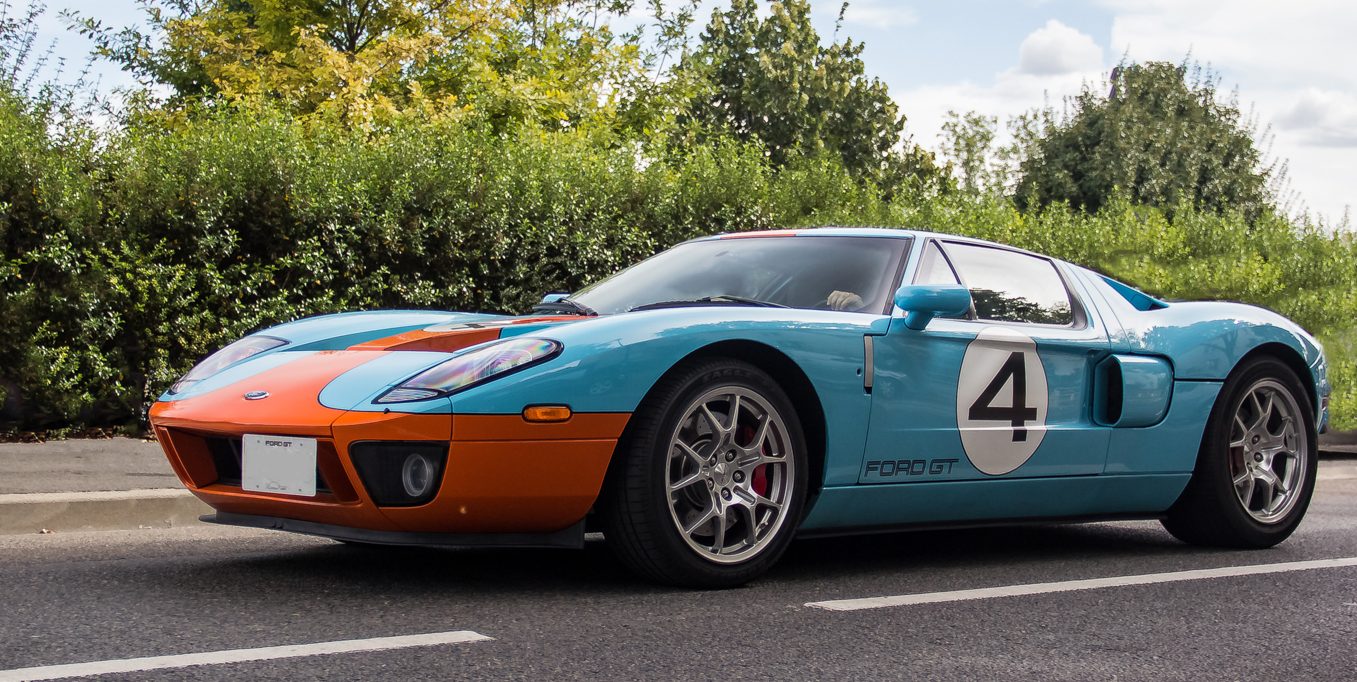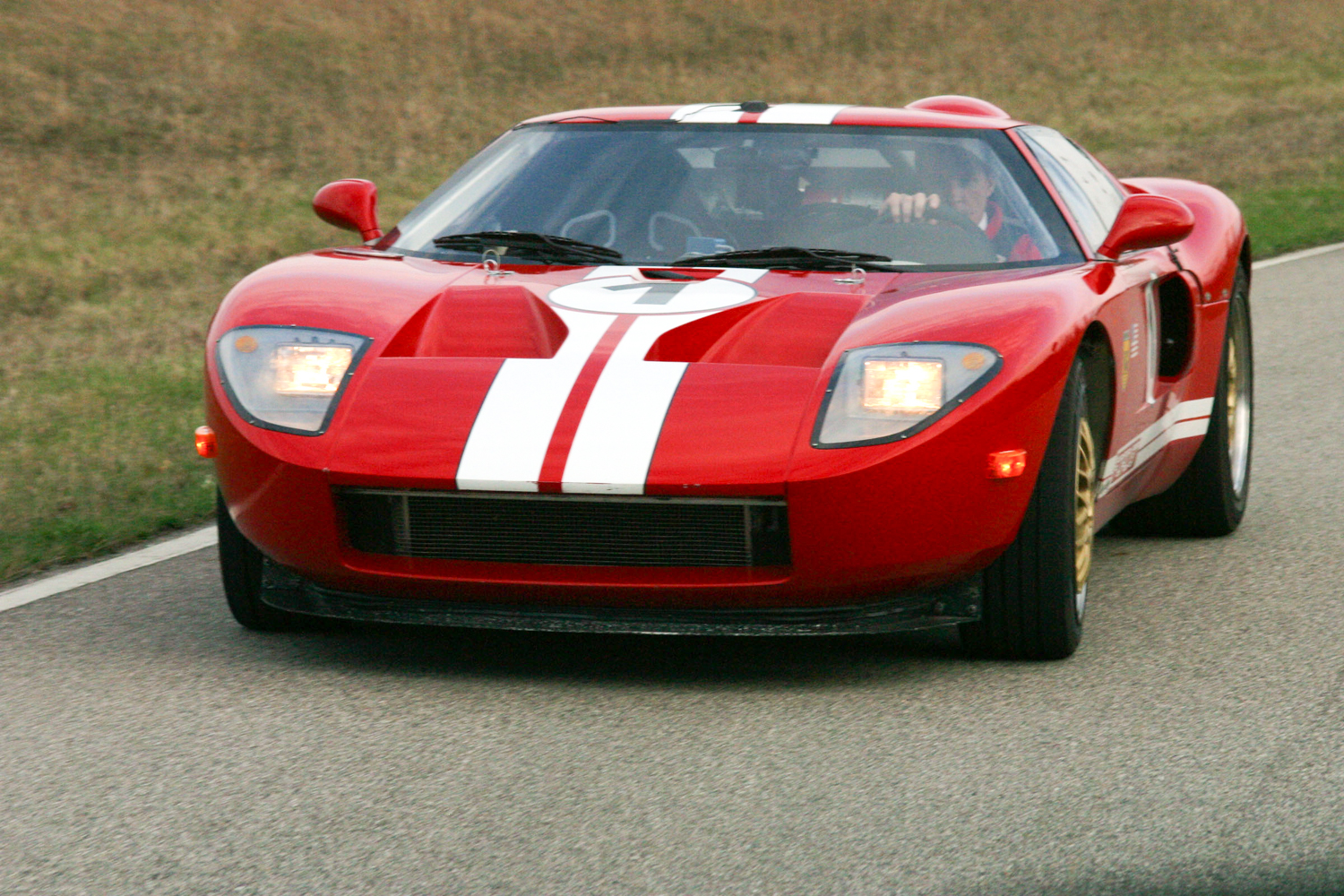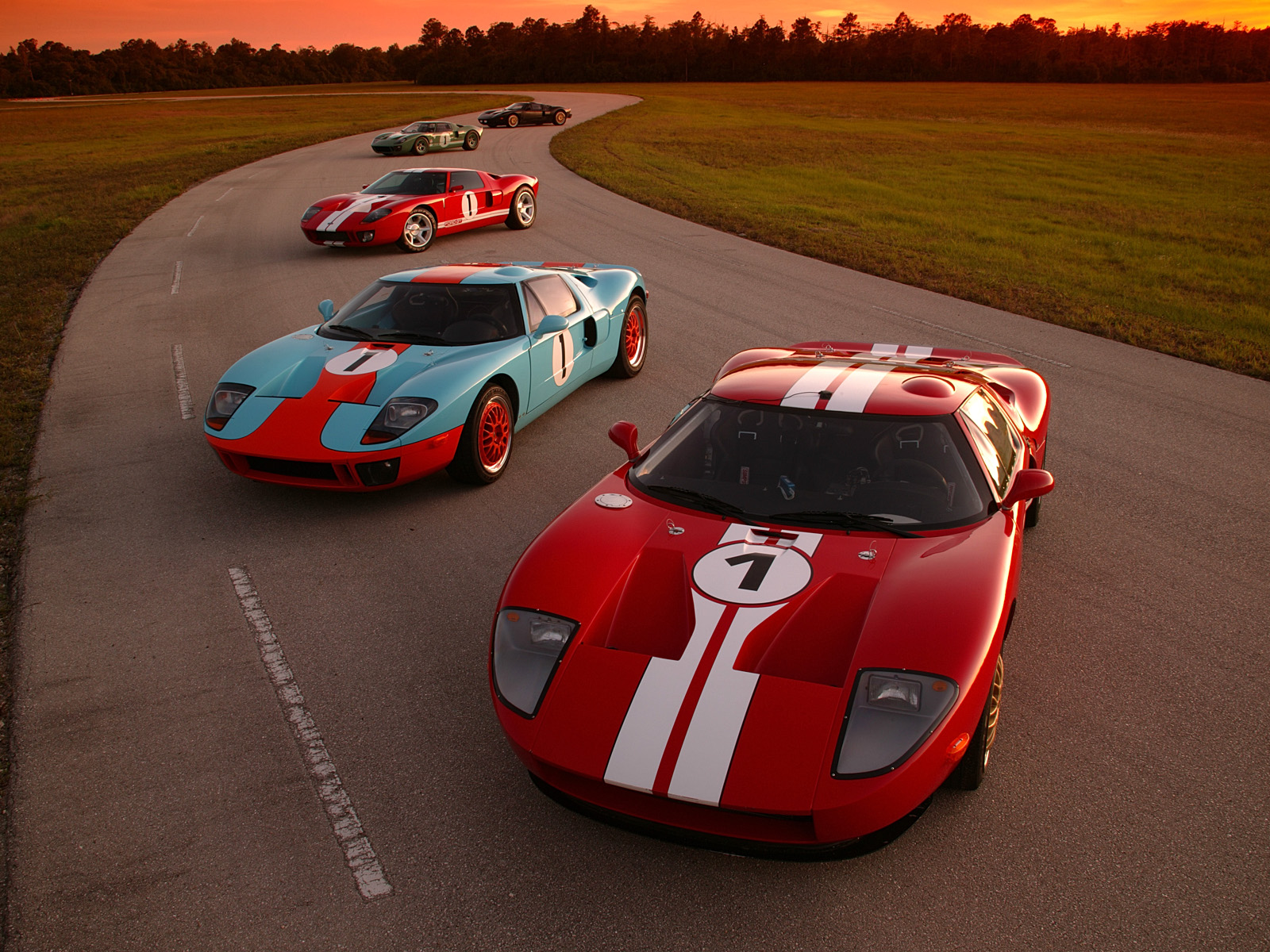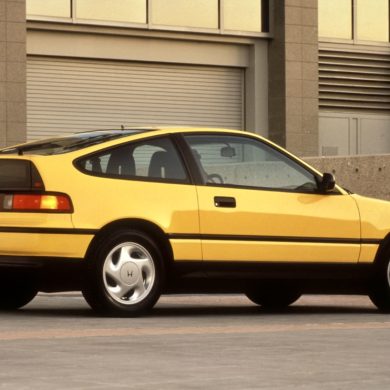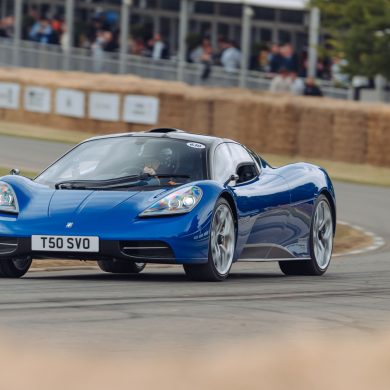Developed first as a show car to celebrate the Ford Centennial, the Ford GT40 concept car came as a big surprise when it hit the 2003 Detroit Auto Show. Journalists salivated, enthusiasts beamed, and inside Ford, the bean counters quietly went to work to determine the impossible; make it a legitimate road legal sports car. Penned by Camilo Pardo, then head of the “Legends” studio, the GT40 concept car was lauded for both beauty and engineering advancements but it would ultimately be the uncanny resemblance to the one-two-three Le Mans victory cars, the enchanted smackdown of Ferrari dominance, and the legacy of some of the greatest racecar drivers that would be so beautifully summed up in the gorgeous lines of the Ford GT.
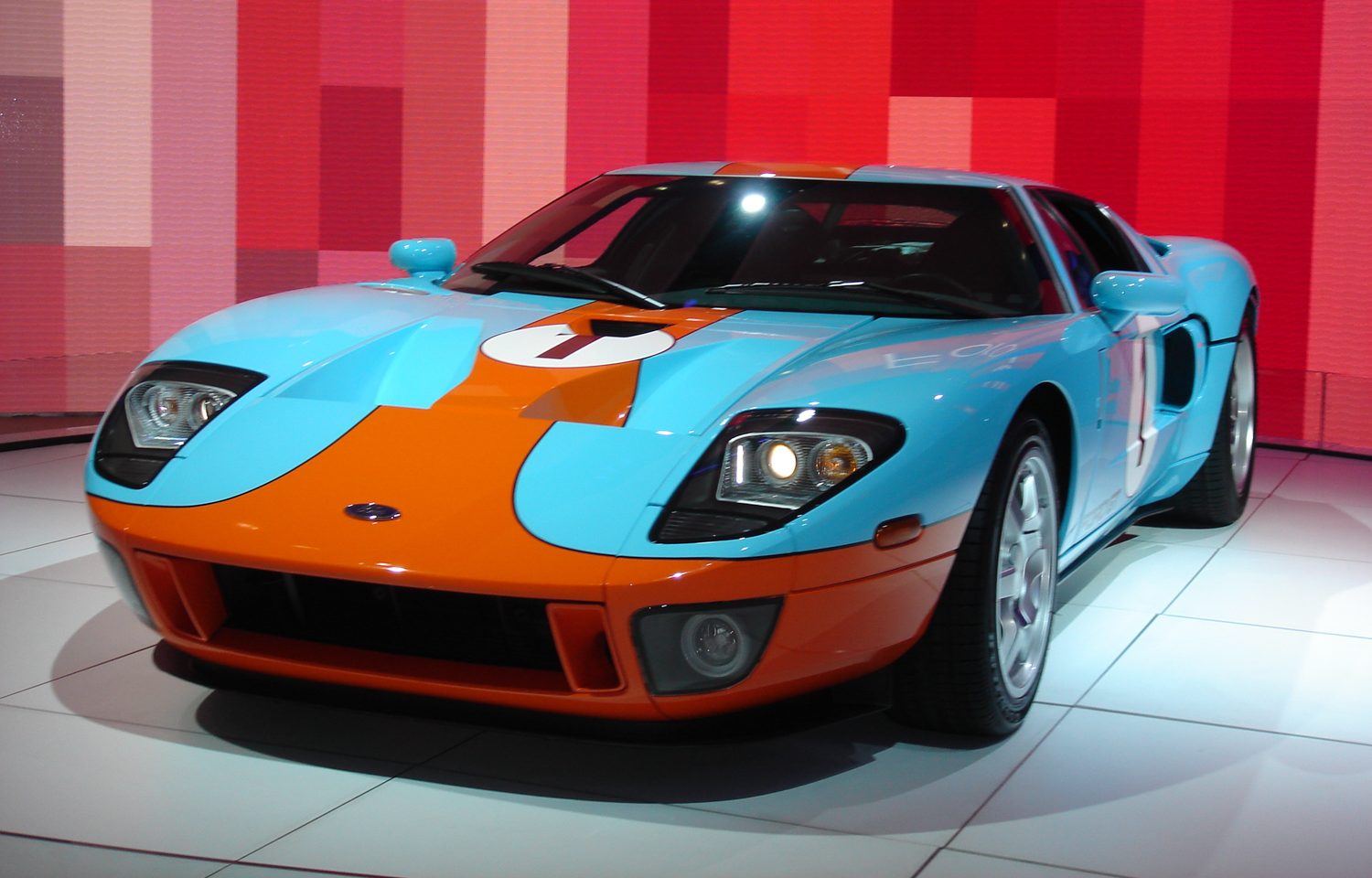
Shortly after the show car was released, Ford pulled out all the stops and committed to building the production car in record time. Radical in so many ways, yet offering balanced driving manners and legacy design, the Ford GT bested nearly all of the more expensive contemporary exotics in every performance class, all the while offering unheard of reliability and low-cost maintenance at an affordable price. During the two-year production run from late 2004 into early 2006, Ford built only 4,000 GTs, nearly all of which were sold with substantial dealer markup. Available with just four options—a McIntosh sound system, Racing Stripes, Painted Brake Calipers, and Forged Alloy Wheels—each car was surprisingly unique with a range of colors and stripes. But there was one other option. At a whopping $13,000.00 extra cost, the Heritage Livery (emulating the iconic Gulf Oil orange and blue paint scheme) was also available; an option filled on just 343 cars during the entire production run.
Once ready for production, the 2005 Ford GT featured a number of innovative technologies including a superplastic thermo-formed frame, aluminum formed body panels, roll bonded floors (for increased rigidity and structural improvement), a lightweight magnesium center console, and state of the art composite materials and bonding technology composing the rigid, but lightweight frame. State of the art technology was not limited to the chassis alone as the mid-mounted, 5.4-liter Ford Modular dual overhead cam 550-hp V8 engine, equipped with a Twin Screw Supercharger, was mated to a Ricardo six-speed manual transmission. Potent and highly capable, the Ford GT delivered top performance numbers in every category with 0-60 3.3 second times, the quarter mile lapsing in 11.4 seconds, and a top speed over 205 mph.
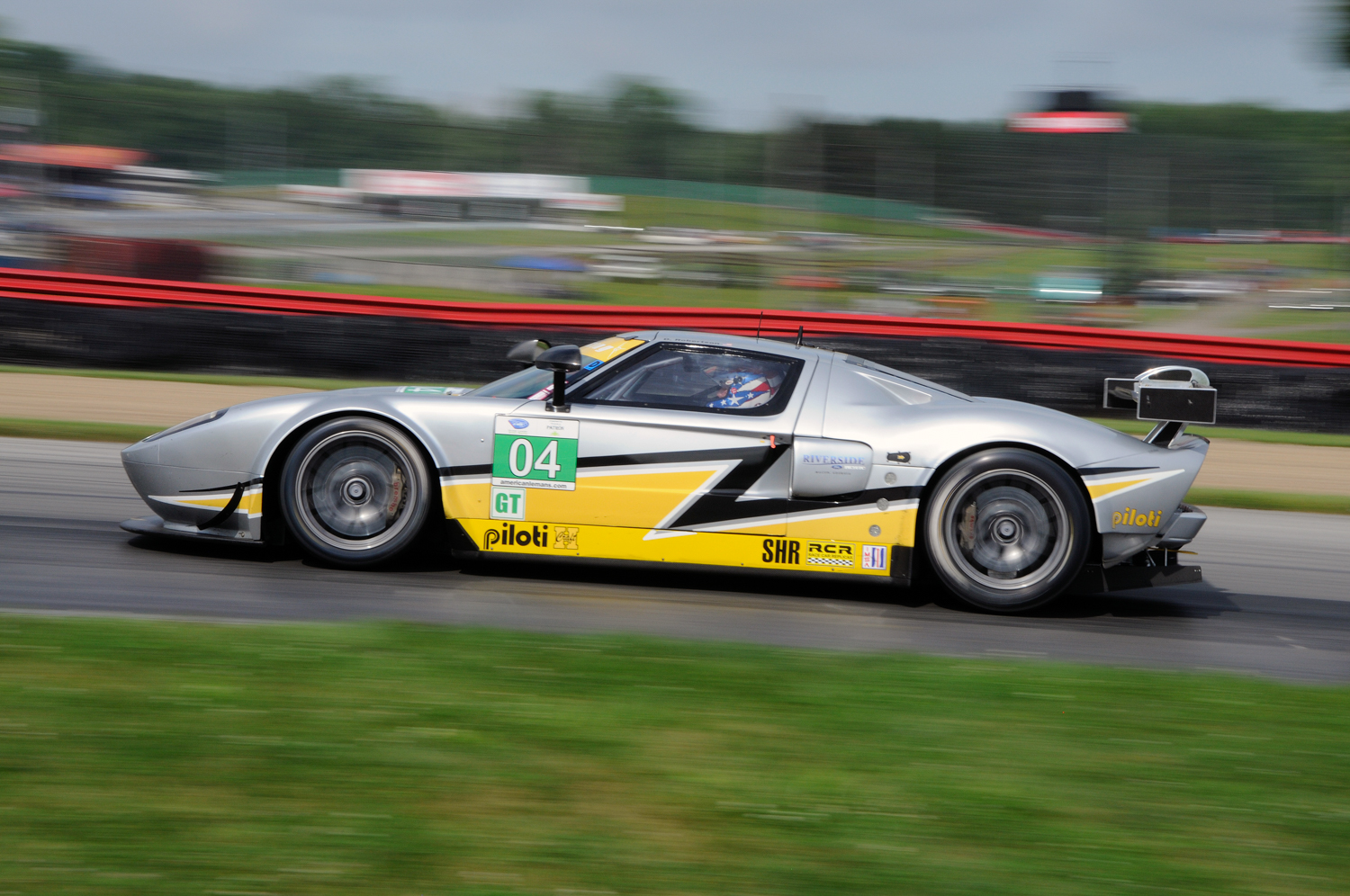
Performance numbers and rarity aside, we turn to the defining aspect of these cars; the impressive exterior design. The original GT40 earned its genesis from an early Lola 289 powered development car, which led to a string of participating development teams the likes of which reads like a “Who’s Who” of 1960s racing. Holman-Moody, Shelby, virtually every major name in racing, and of course the internal resources of Ford Motor Company, all contributed to the landmark design of the car. Constantly refined while attempting to achieve high speed stability and performance milestones, the GT40 was a pure racing machine. Yes, a handful of street cars were built and sold, but the car was really a weapon specifically built to dominate Le Mans.

When Pardo and his Legends team embarked on the task to design the Ford GT, the vision was clear – to maintain the look and feel of the original, but with a design that could distinctively but safely house two occupants in comfort, offer reliable performance, and deliver on the iconic GT40 looks. In 1966, this was an easier task. In 2004, with regulations, bumper and headlight heights, airbags, crumple zones, and passenger safety requirements for road cars, it is all the more remarkable that the Ford GT was built at all, let alone resulting in such a beautiful expression of both the past and future of Ford performance cars. But the team didn’t simply settle on reincarnating the Le Mans vibe with the new GT, rather they took a new approach to the idea of this iconic era, not just the car it represents.
This remarkable vision would prove to not only be important for the car itself upon introduction, it would be a portent for the future as one of the last performance cars built with a manual transmission, a gas-burning engine, and all the glorious road feedback delivered in a car that is not cosseted in ride control or computerized performance management – no traction control, no stability control. Your responsibility for excitement rests in your relationship with the car. What it says to you while you drive it, tells you more and more how to best push it. You actually drive the Ford GT, it doesn’t drive you. With all the glory of the power and performance, every aspect of the body design delivers on the promises of great sports car design; the balanced mid-engine package, low roof, sweeping forward glass, menacingly wide open-mouth grille, exotic air intakes and warm extractors, each cleverly positioned for maximum performance but also inviting your eyes to stop and marvel at the details. Like a Saturn V rocket, the skin reveals mechanical details with a precise aesthetic that is all business. And, much like the original, a quick peak into the rear glass will tell you everything your childlike heart could ever want to know about the potential within the beast – Saturn V power ready to launch.
Fifteen years is a long time in car design and development. A lot has happened to eclipse the technology of the 2005 Ford GT. Ford has also brought the same theme back with a newer variation, still mindful of the GT40 idea but more of a statement away from the past rather than lingering on what it meant to previous generations of motorsports enthusiasts. The new Ford GT has a lot to offer, but the 2005 version remains a stunning visual and technological statement that will not only continue to impress performance minded enthusiasts, it will very likely rise to take its place among the most collectible sports cars of the modern era.


